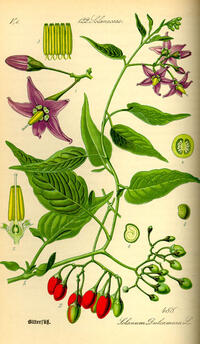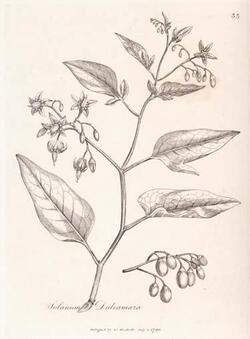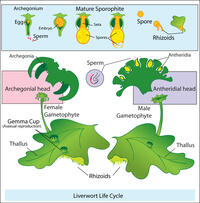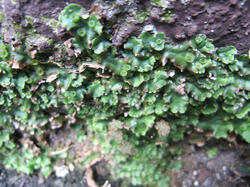This is an old revision of the document!
Brussels Plants
the information about plants which grows around the FoAM building/ Koolmijnenkaai 30-34
Solanum dulcamara
is a species of vine in the potato genus Solanum, family Solanaceae. It is native to Europe and Asia, and widely naturalised elsewhere, including North America, where it is an invasive problem weed. It occurs in a very wide range of habitats, from woodlands to scrubland, hedges and marshes. In the days of belief in witchcraft, shepherds used to hang it as a charm round the necks of those of their beasts whom they suspected to be under the evil eye.The older physicians valued Bittersweet highly and applied it to many purposes in medicine and surgery, for which it is no longer used. It was in great repute as far back as the time of Theophrastus, and we know of it being in use in this country in the thirteenth century. Gerard says of it:'The juice is good for those that have fallen from high places, and have been thereby bruised or beaten, for it is thought to dissolve blood congealed or cluttered anywhere in the intrals and to heale the hurt places.' Boerhaave, the celebrated Dutch physician, considered the young shoots superior to Sarsaparilla as a restorative, and Linnaeus, who at first had an aversion to the plant, later spoke of it in the highest terms as a remedy for rheumatism, fever and inflammatory diseases of all kinds. There are few complaints for which it has not been at some time recommended.
—Medicinal Action and Uses— The drug possesses feeble narcotic properties, with the power of increasing the secretions, particularly those of the skin and kidneys. It has no action on the pupil of the eye. It is chiefly used as an alterative in skin diseases, being a popular remedy for obstinate skin eruptions, scrofula and ulcers. It has also been recommended in chronic bronchial catarrh, asthma and whoopingcough. For chronic rheumatism and for jaundice it has been much employed in the past, an infusion of 1 OZ. of the dried herb to 1/2 pint water being taken in wineglassful doses, two or three times daily. From the fluid extract made from the twigs, a decoction is prepared of 10 drachms in 2 pints of boiling water, boiled down to 1 pint, and taken in doses of 1/2 to 2 OZ. with an equal quantity of milk. The berries have proved poisonous to a certain degree to children. Fluid extract, 1/2 to 2 drachms.
http://www.botanical.com/botanical/mgmh/n/nighwo06.html http://en.wikipedia.org/wiki/Solanum_dulcamara
Hordeum murinum (wall barley)
- Plantago major(Broad-Leaved Plantain)
- Buddleja Davidii (Butterfly Bush)
- Pissenlit officinal or Taraxacum officinale(Dandelion)
- Crepis tectorum (Narrow-Leaved Hawk's-Beard)
- Conyza canadensis
- Galinsoga ciliata
- Marchantiophyta/Pellia epiphylla (Liverwort)
Most liverworts are small, usually from 2–20 millimetres (0.08–0.8 in) wide with individual plants less than 10 centimetres (4 in) long, so they are often overlooked. The most familiar liverworts consist of a prostrate, flattened, ribbon-like or branching structure called a thallus (plant body); these liverworts are termed thallose liverworts. However, most liverworts produce flattened stems with overlapping scales or leaves in three or more ranks, the middle rank being conspicuously different from the outer ranks; these are called leafy liverworts or scale liverworts.
Liverworts have a gametophyte-dominant life cycle, with the sporophyte dependent on the gametophyte. Cells in a typical liverwort plant each contain only a single set of genetic information, so the plant's cells are haploid for the majority of its life cycle. This contrasts sharply with the pattern exhibited by nearly all animals and by most other plants. In the more familiar seed plants, the haploid generation is represented only by the tiny pollen and the ovule, while the diploid generation is the familiar tree or other plant. Another unusual feature of the liverwort life cycle is that sporophytes (i.e. the diploid body) are very short-lived, withering away not long after releasing spores. Even in other bryophytes, the sporophyte is persistent and disperses spores over an extended period. –Ecology– Today, liverworts can be found in many ecosystems across the planet except the sea and excessively dry environments, or those exposed to high levels of direct solar radiation. As with most groups of living plants, they are most common (both in numbers and species) in moist tropical areas.Liverworts are more commonly found in moderate to deep shade, though desert species may tolerate direct sunlight and periods of total desiccation. http://en.wikipedia.org/wiki/Marchantiophyta
- Geranium robertianum




